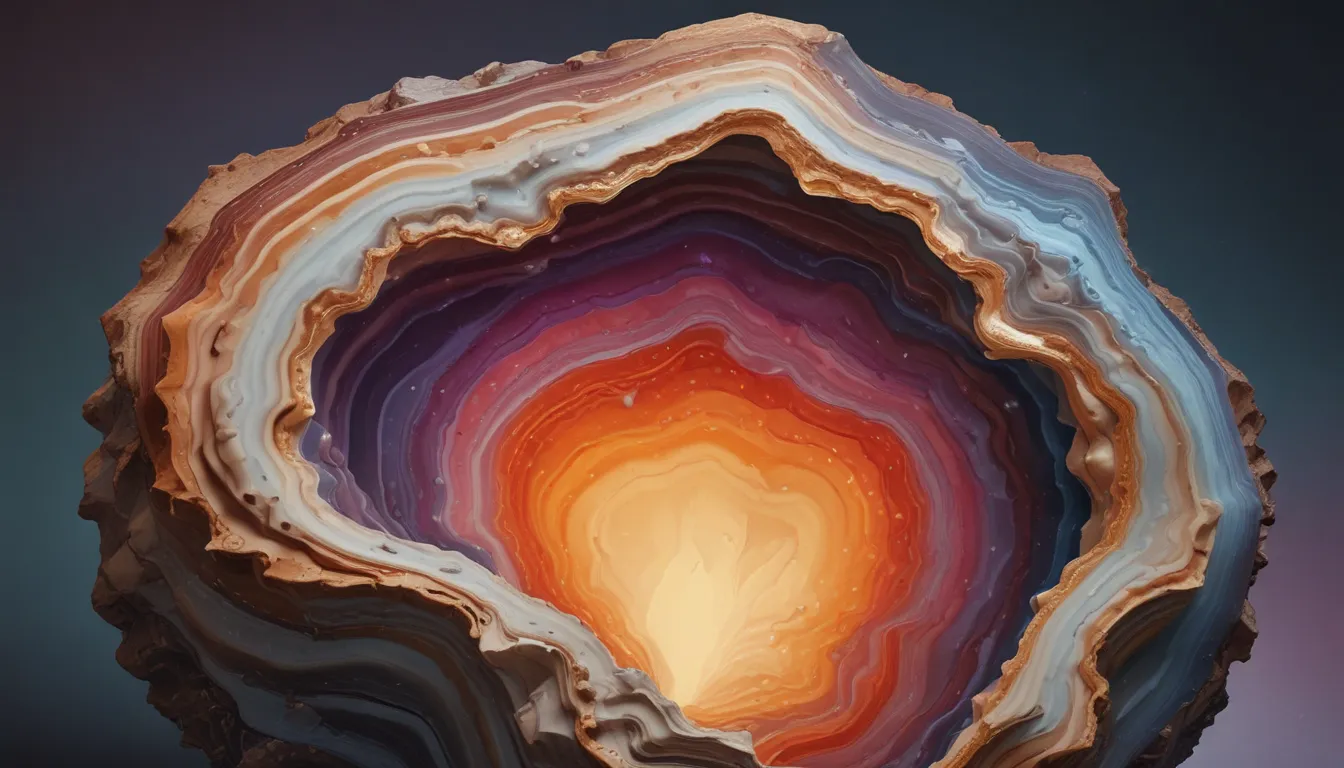A Note About Images: The images used in our articles are for illustration purposes only and may not exactly match the content. They are meant to engage readers, but the text should be relied upon for accurate information.
Agate, a captivating gemstone with vibrant colors and unique banding patterns, has entranced people for centuries with its striking beauty and rich history. From its geological origins deep within the Earth to its diverse applications in jewelry, ornamental objects, and home décor, agate continues to captivate admirers worldwide. In this article, we will explore 20 fascinating facts about agate, shedding light on its formation, cultural significance, metaphysical properties, and more. Join us on a journey through the enchanting world of agate as we uncover the secrets and wonders hidden within this extraordinary gemstone.
Key Takeaways:
- Agate, a captivating gemstone with vibrant colors and unique banding patterns, is revered for its metaphysical properties and diverse applications in jewelry, ornamental objects, and home décor. – Found in volcanic rock cavities and dyed to enhance its hues, agate continues to captivate admirers worldwide with its rich history, diverse applications, and enduring allure.
What is Agate?
Agate is a variety of chalcedony, a mesmerizing form of cryptocrystalline quartz known for its vibrant colors and unique banding patterns that make each specimen a true work of art.
The Origin of the Name
Agate gets its name from the Achates River in Sicily, where it was initially discovered. The gemstone’s name is derived from this historical location that adds to its allure and mystique.
The Spectrum of Hues
From rich earthy tones to vibrant shades of blue, agate displays a remarkable array of colors that make it a popular choice for ornamental purposes and creating stunning jewelry pieces.
The Symbolism of Agate
Agate is not only known for its aesthetic appeal but also for its metaphysical properties. Believed to symbolize strength, protection, and balance, agate is associated with the zodiac sign Gemini and is often used in alternative healing practices.
Volcanic Origins
Agate is formed within cavities in volcanic rock, where layers of microscopic quartz crystals are deposited by silica-rich fluids, giving rise to its distinctive banding and patterns.
Global Presence
This captivating gemstone is found in various locations worldwide, including Brazil, India, Mexico, the United States, and Madagascar, each region contributing unique colors and formations to the agate family.
Artistic Applications
Agate is a popular material for artisanal crafts, making its way into jewelry, decorative carvings, and stunning home décor pieces that showcase its natural beauty and captivating patterns.
Historical Significance
Throughout history, agate has been revered and utilized by various civilizations for its ornamental, protective, and symbolic qualities, adding a layer of historical significance to this timeless gemstone.
Lapidary Arts
Skilled lapidaries cut and polish agate to reveal its exquisite banding and colors, transforming it into captivating gemstone cabochons and objets d’art that highlight its natural beauty.
Agate in Home Décor
From striking bookends to mesmerizing coasters, agate’s captivating patterns and vibrant colors make it a favored choice for enhancing interior spaces and adding a touch of natural elegance.
The Allure of Agate
With its rich history, diverse applications, and captivating allure, agate remains a timeless gemstone that continues to enthrall and inspire admirers around the world, cementing its status as a cherished and revered gemstone.
In conclusion, agate is a fascinating gemstone with a rich history and a wide array of unique properties that continue to captivate people worldwide. Whether you’re a gemstone enthusiast, a jewelry aficionado, or simply intrigued by the wonders of the natural world, exploring the beauty and significance of agate is a rewarding journey filled with history, artistry, and symbolism.
FAQs:
What are the different types of agate?
Agate comes in various types, including blue lace agate, moss agate, and fire agate, each with its own distinct color patterns and characteristics.
How is agate formed?
Agate is typically formed in the cavities of volcanic rocks or ancient lava, where silica-rich fluids deposit layers of microscopic quartz crystals, resulting in its unique banded appearance.
Agate’s allure extends beyond its captivating colors and patterns. Nature’s artistry shines through in agatized coral, a unique blend of organic beauty and mineral magic. Grape agate’s whimsical spherical formations evoke wonder and delight. Sharing agate’s marvels with loved ones, especially young minds eager to explore, creates lasting memories and sparks curiosity about Earth’s hidden treasures.
Was this page helpful? Our commitment to delivering trustworthy and engaging content ensures that each fact we share is not only fascinating but also credible. Explore and learn with us, trusting in our dedication to quality and authenticity.






